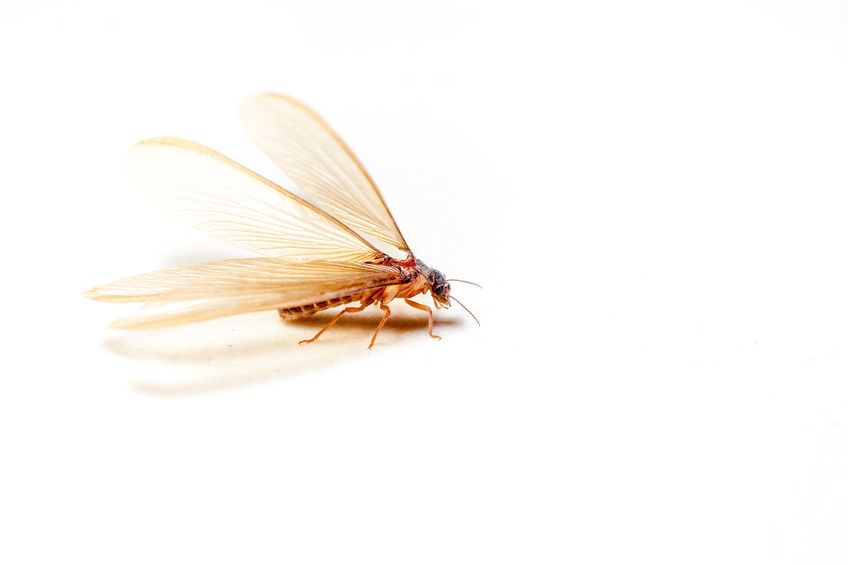Fill out the form below and a Cypress Creek representative will be in touch with you about your pest control needs.
BLOG
- BLOG
- /
- Flying Termites: Identification, Sings, and Prevention

Flying Termites: Identification, Sings, and Prevention
Did you just spot a termite with wings? Or is it a flying ant? Or a housefly? How do I identify?
Hold your thoughts! We all have heard about the number of damage termites can cause. And confusing flying termites with some other flying insect is a huge risk.
Also, it is important to understand that not all flying insects are termites. With so many types of flying insects, it becomes difficult for people to know which one is termites.
This blog will give guides you identify flying termites along with the initial signs of infestation.
Let’s get going…
What are Flying Termites?
While Flying termites are signs that they are reproducing, swarming signals the start of a new colony. Flying or winged termites are sexually mature termites with wings, called swarmers, who leave their existing colony, either due to lack of food or overcrowding.
When conditions are right, termites develop into swarmers. Both male and female flying termites are known as alates. They leave their existing underground nests or colonies to mate, reproduce and set up new colonies at some other hospitable location.
Termite swarms mostly occur during warm weather condition, particularly in the spring. Flying termites, in and around your property could be a tell-tale sign of an ongoing termite infestation nearby which is alarming.
Identifying Flying Termites
Recognizing termites with wings is crucial to prevent infestation and protect your house from termite attack. Listed below are some noteworthy points that differentiate flying termites from the rest:
- Flying termites have an elongated or stretched-out body, and their length can vary depending on their species type, ranging between half a centimetre to near a centimetre.
- They can also vary in colour shades from light brown to dark shade of brown. Termites that fall in the latter colour category can retain water.
- They have straight antennae, a straight-sided waist and four wings that are longer than their body.
- Their wings are of equal shape and size, maybe milky-coloured and have many veins.
- The thorax and abdomen of termites are broadly connected.
Early Signs of Flying Termite Infestation
Even though flying termites are one of the strongest indicators of a termite problem, flying swarming is a brief event, and hence flying termites can be difficult to spot. Therefore, you should keep your eye open and also look for signs that indicate a termite problem. Here are a few signs to look for before they start creating trouble:
- Piles of discarded wings in and around your property
- Frass or termite droppings in your home
- Hollowed-out wood and hollow sounds on wood upon tapping
- Earther or mud tubes along the foundation of your home
- Wood shavings, and small holes found on trees in your yard
- Visible exterior wood damage
- Uneven or bubbling paint
- Sounds of termites: headbanging in the walls and rattling
Tips to Keep Flying Termites Away
- Clean gutter regularly to prevent the accumulation of water.
- Keep mulch and woodpiles away from the foundations of your home
- Practice Regular housekeeping and maintenance
- Repair damaged roof tiles, soffits, or fascias
- Trim all the overgrown trees
- Keep basements, attics and crawl spaces well ventilated and moisture-free
Wrapping Up
The sight of flying termites is a threat flying over your home. If you see swarms of flying termites around your home, treat it as a warning sign of two budding hazards: your house is already infested or is at the risk of potential infestation of termites. The moment you notice a termite flying around your property – call a professional termite control services and get your house inspected before it is too late.
Cypress Creek Pest Control
8722 Rockmore Dr
Houston, TX 77064
Feel Free to Call Us Now
(281) 469-2679
Connect With Us
nobugs@cycreekpestcontrol.com
About
Cypress Creek Pest Control has been providing quality and dependable service to Houston homes, agencies, schools, and local businesses since 1968. We are one of the largest independently owned full-service pest control companies in the state of Texas.
Quick Links
Our Services
Areas Served

